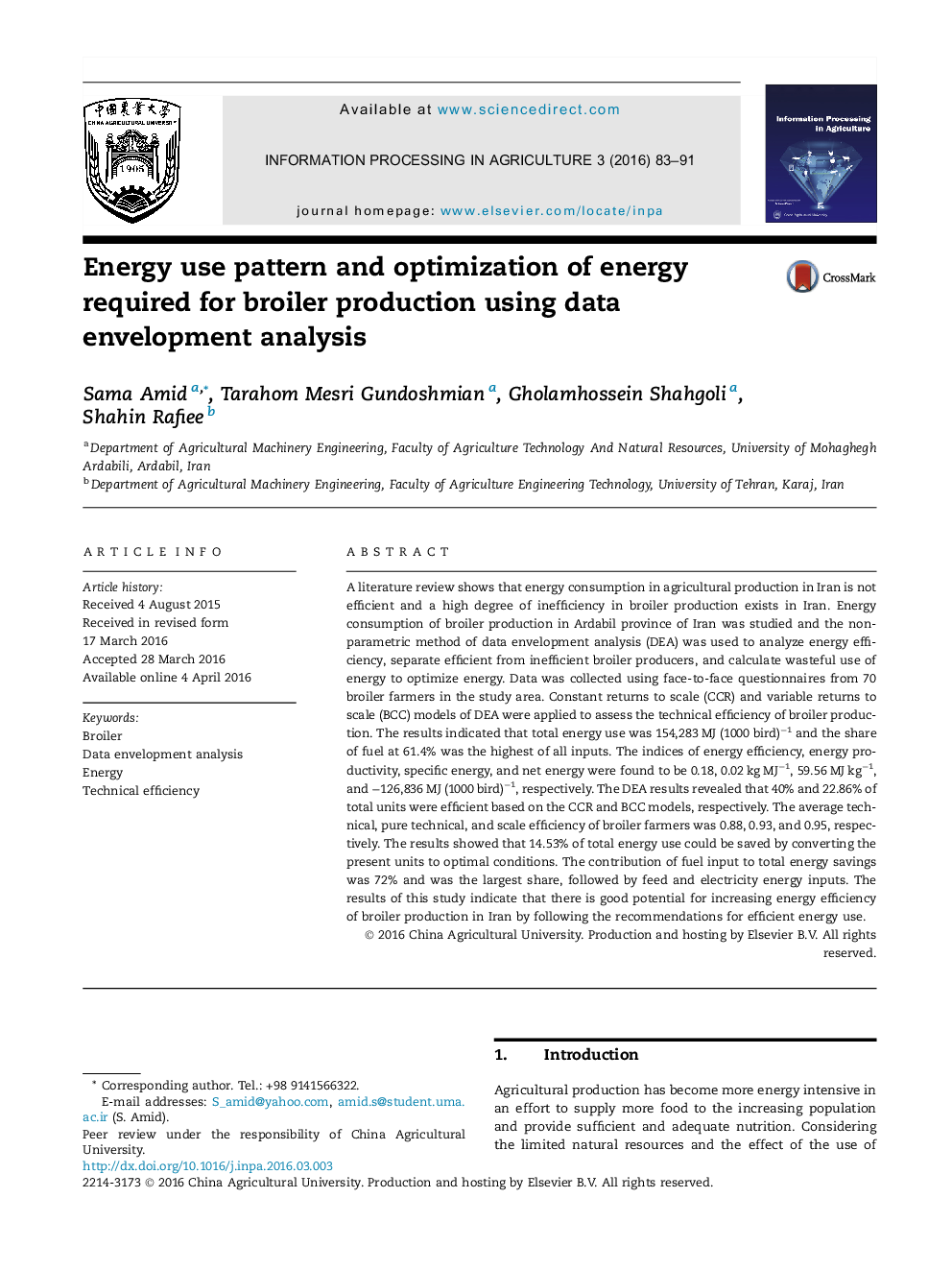| کد مقاله | کد نشریه | سال انتشار | مقاله انگلیسی | نسخه تمام متن |
|---|---|---|---|---|
| 4493299 | 1318620 | 2016 | 9 صفحه PDF | دانلود رایگان |
• We used a non-parametric method of DEA to analyze the efficiency of broiler producers.
• About 40% of producers were technically and 23% were pure technically efficient.
• The average technical, pure technical and scale efficiency of producers were 0.88, 0.93 and 0.95, respectively.
• Optimization of energy use improved the energy use efficiency by 14.53%.
• From the total saving energy, the share of diesel fuel input was the highest.
A literature review shows that energy consumption in agricultural production in Iran is not efficient and a high degree of inefficiency in broiler production exists in Iran. Energy consumption of broiler production in Ardabil province of Iran was studied and the non-parametric method of data envelopment analysis (DEA) was used to analyze energy efficiency, separate efficient from inefficient broiler producers, and calculate wasteful use of energy to optimize energy. Data was collected using face-to-face questionnaires from 70 broiler farmers in the study area. Constant returns to scale (CCR) and variable returns to scale (BCC) models of DEA were applied to assess the technical efficiency of broiler production. The results indicated that total energy use was 154,283 MJ (1000 bird)−1 and the share of fuel at 61.4% was the highest of all inputs. The indices of energy efficiency, energy productivity, specific energy, and net energy were found to be 0.18, 0.02 kg MJ−1, 59.56 MJ kg−1, and −126,836 MJ (1000 bird)−1, respectively. The DEA results revealed that 40% and 22.86% of total units were efficient based on the CCR and BCC models, respectively. The average technical, pure technical, and scale efficiency of broiler farmers was 0.88, 0.93, and 0.95, respectively. The results showed that 14.53% of total energy use could be saved by converting the present units to optimal conditions. The contribution of fuel input to total energy savings was 72% and was the largest share, followed by feed and electricity energy inputs. The results of this study indicate that there is good potential for increasing energy efficiency of broiler production in Iran by following the recommendations for efficient energy use.
Journal: Information Processing in Agriculture - Volume 3, Issue 2, June 2016, Pages 83–91
